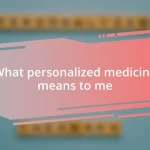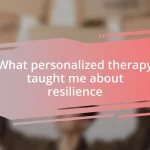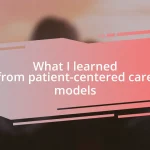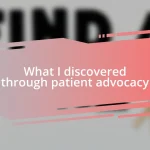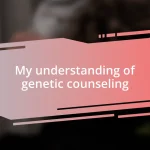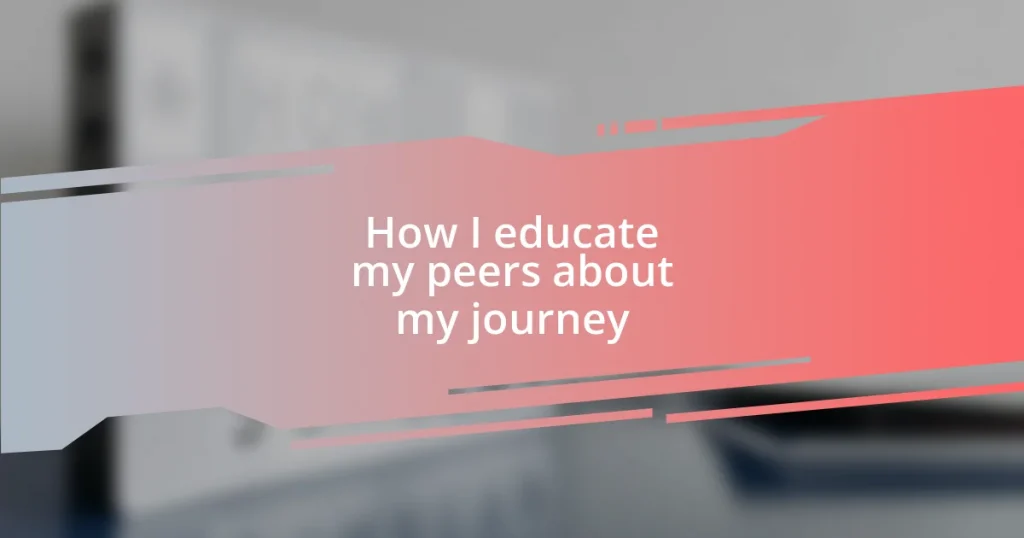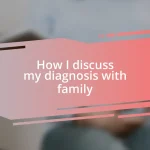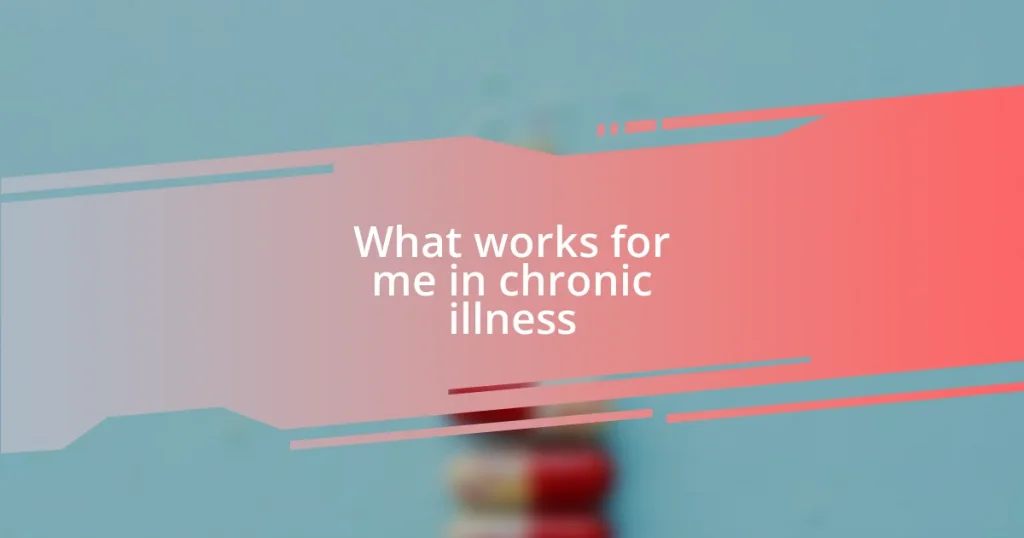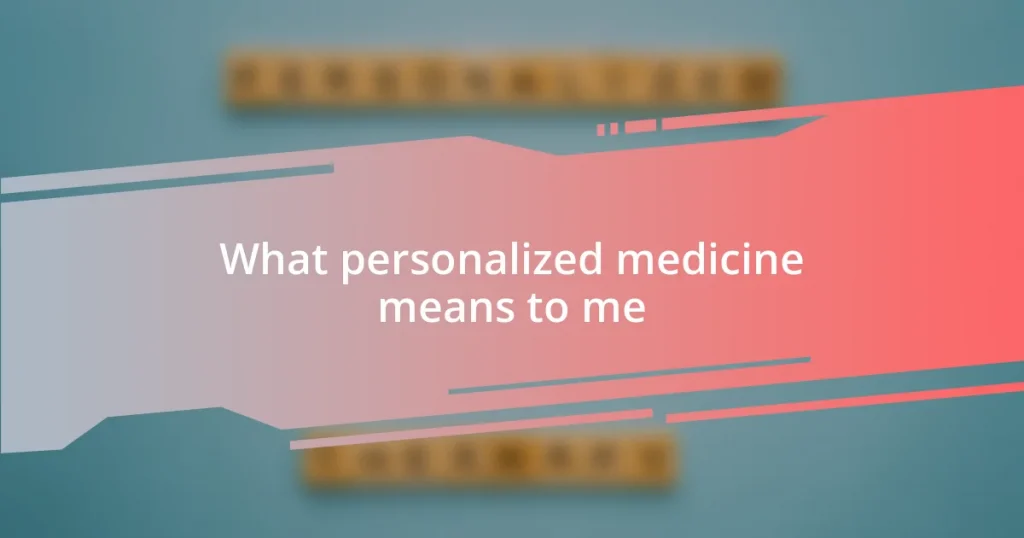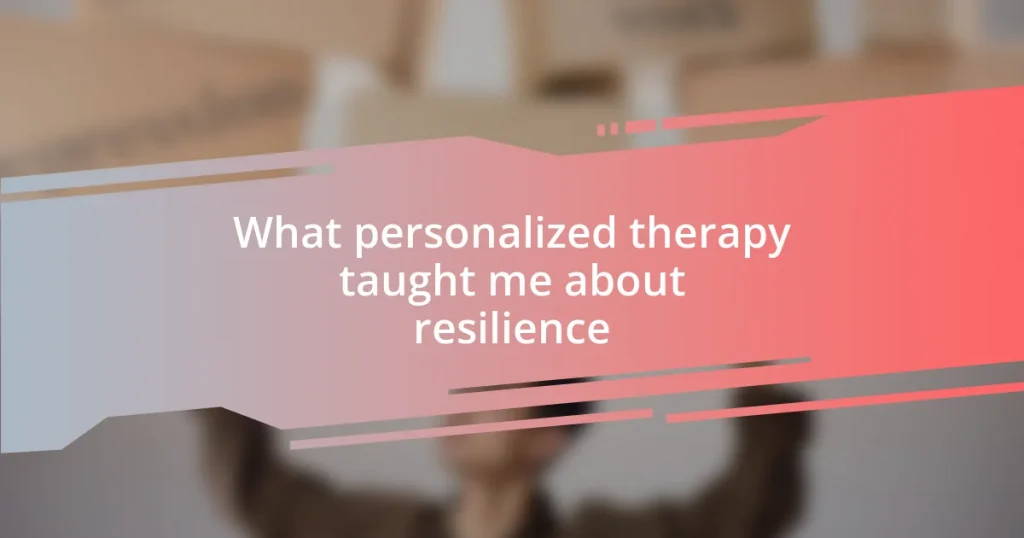Key takeaways:
- Overcoming insecurities and setbacks fosters resilience and personal growth through collaboration.
- Sharing personal challenges creates supportive connections and highlights common experiences among peers.
- Engaging in open dialogue and utilizing multimedia enhances learning and encourages feedback, fostering a sense of community.
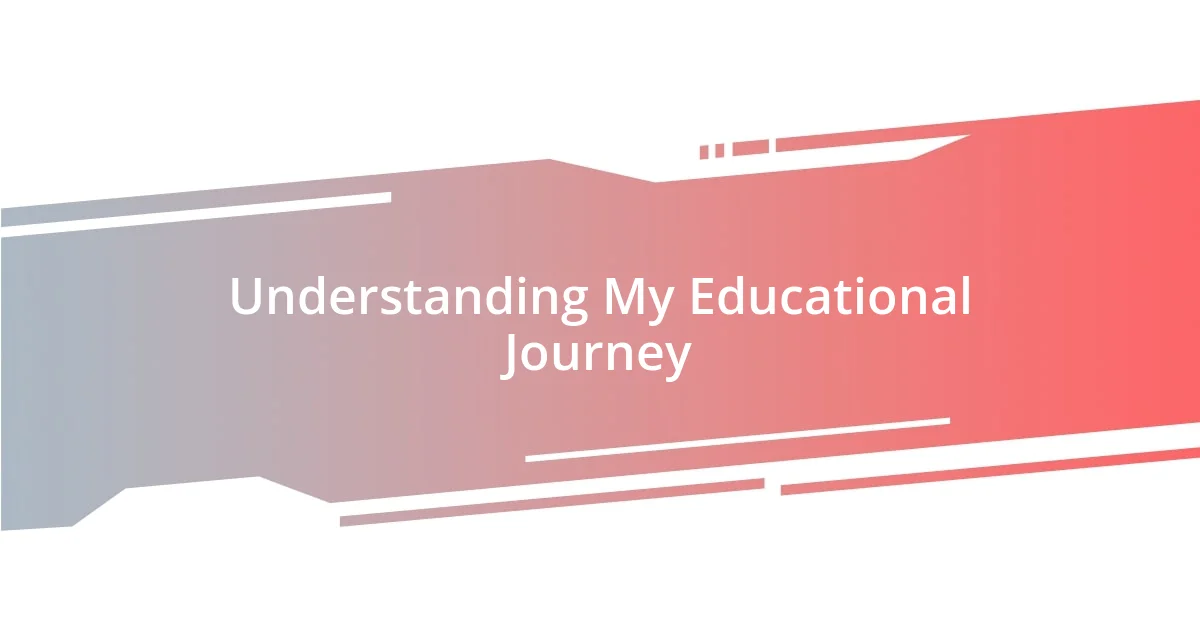
Understanding My Educational Journey
Understanding my educational journey has been like peeling back layers of an onion; there are tears, but each layer unveils something new about myself. I remember walking into my first college class, heart racing and stomach churning. Would I measure up? Those early insecurities taught me resilience, and I learned that every challenge I encountered was an opportunity for growth.
As I navigated through various courses, I often questioned the relevance of some subjects. Why do I need to know calculus when I’m passionate about literature? But looking back now, I realize each subject sculpted my critical thinking skills, allowing me to make connections I never expected. It’s fascinating how something as seemingly unrelated as math can enhance one’s analytical abilities, wouldn’t you agree?
One of the most poignant moments came during a group project when we encountered a major setback. It felt like the end of the world, and I was devastated. However, that experience taught me the importance of collaboration and perseverance. I still carry those lessons with me today, reminding me that setbacks are just stepping stones on the path to success.
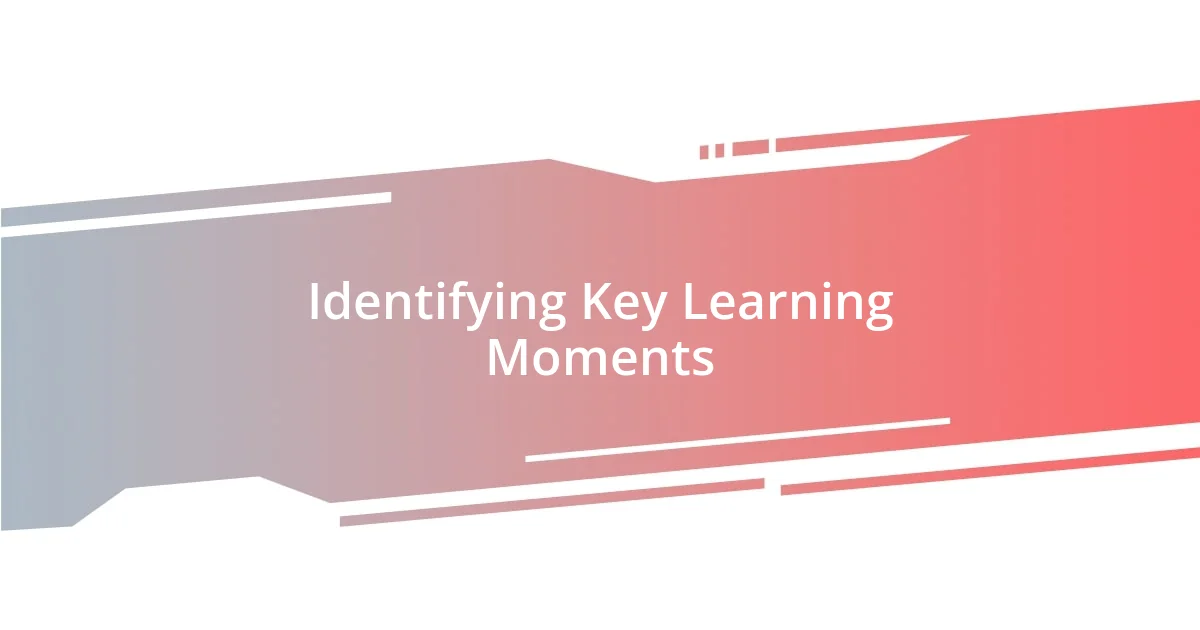
Identifying Key Learning Moments
Identifying key learning moments has been a transformative experience for me. I often look back at situations that initially felt trivial but turned out to be monumental. For instance, I once stumbled through a presentation that fell flat. Standing there, feeling the weight of failure, I realized that vulnerability could lead to connection, and I learned how to express my ideas more authentically.
To help you identify your own key learning moments, consider reflecting on these aspects:
- Emotional Response: How did you feel during the experience? Emotions can provide clues to what truly mattered.
- Impact on Personal Growth: Did a particular moment push you to change your perspective or approach?
- Lessons Learned: What concrete lesson did you take away from the experience that still influences you today?
- Subsequent Actions: Did you make any changes or decisions as a direct result of the experience? This trend can signal significant learning moments.
- Feedback from Others: Sometimes, insights from peers can highlight moments that you might overlook; consider their perspectives.
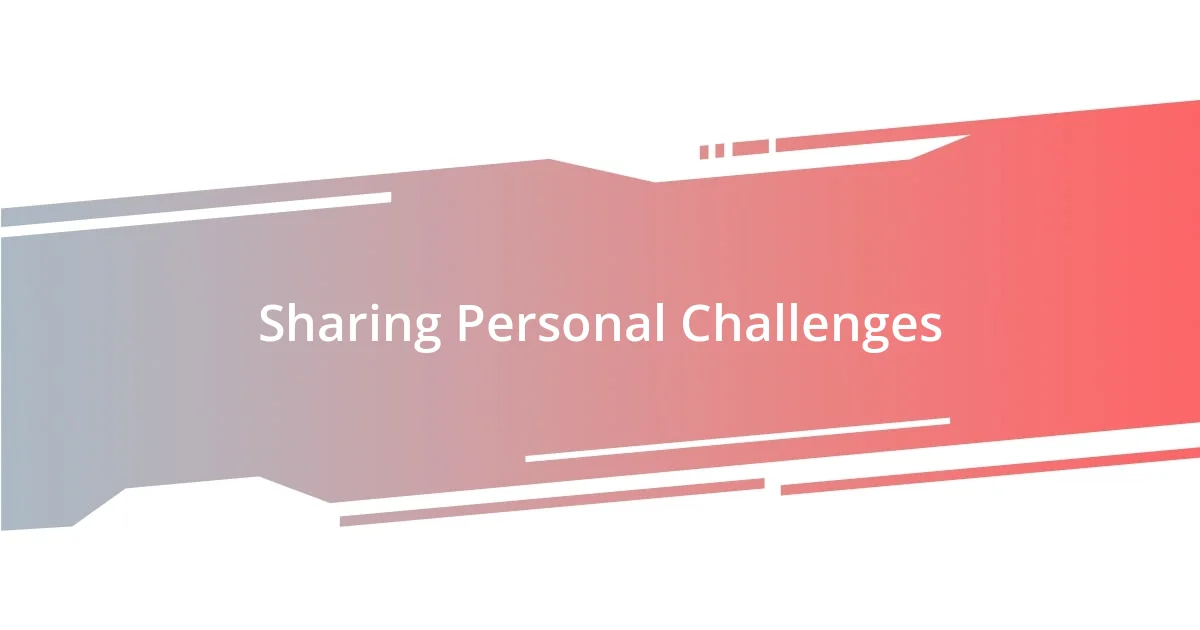
Sharing Personal Challenges
Sharing personal challenges isn’t just about telling a story; it’s a way to foster genuine connections with others. I remember the time I faced a daunting academic hurdle when I received a low grade on an important paper. Instead of hiding from the embarrassment, I chose to talk openly with my classmates about it. Sharing this moment of vulnerability created a supportive atmosphere, and I was surprised to find that many had faced similar struggles. It’s incredible how opening up can turn a challenge into a shared experience, isn’t it?
Another instance comes to mind when I struggled during a particularly intense group project. I felt overwhelmed, and my anxiety levels skyrocketed. Rather than burying my feelings, I decided to share my struggle with my teammates. This honesty led to an unexpected moment of unity; we all shared our stressors and devised a plan that acknowledged our individual challenges. That moment reinforced my belief that discussing difficulties not only helps alleviate personal burden but can also amplify team dynamics.
At times, it feels risky to bare one’s challenges, but I’ve found that doing so lays the groundwork for trust. For example, there was a moment when I hesitated to discuss my struggle to balance academics and work. When I finally opened up, I discovered a wave of support—many of my peers were navigating the same balancing act. This experience highlighted how sharing our challenges can remind us of our common humanity and pave the way for collective resilience.
| Experience | Lesson Learned |
|---|---|
| Low grade on paper | Opening up fosters support. |
| Intense group project | Team dynamics improve with shared struggles. |
| Balancing academics and work | Common challenges build a sense of community. |
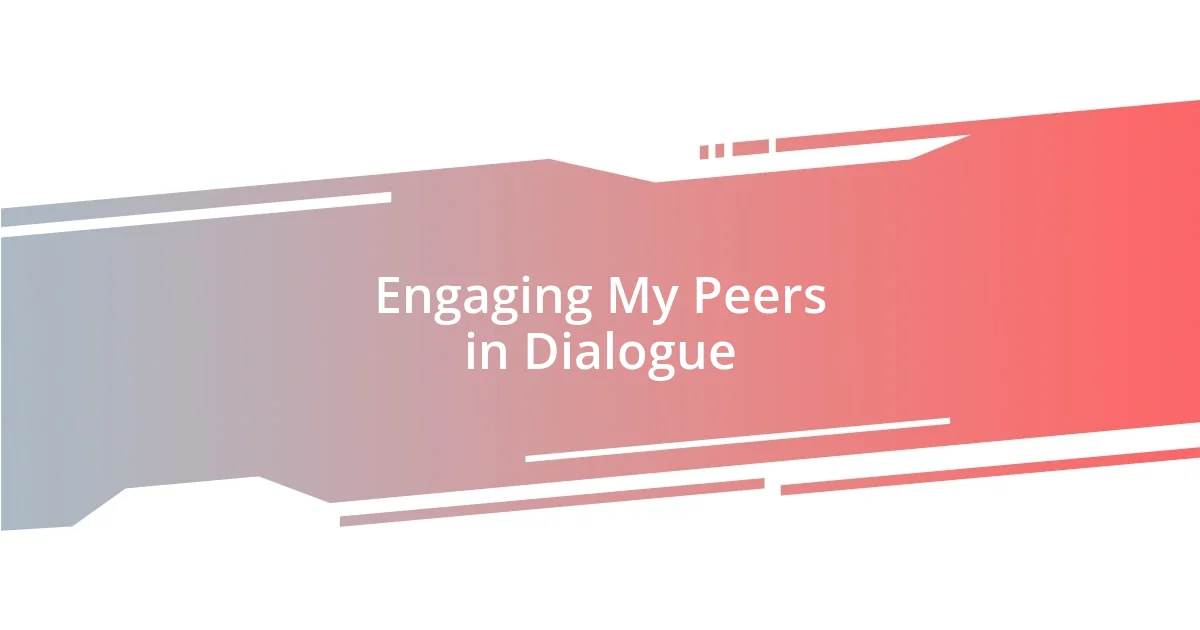
Engaging My Peers in Dialogue
Engaging my peers in dialogue often starts with asking open-ended questions. For example, I’ve found that when I ask my classmates about their own experiences with setbacks, the environment instantly becomes more inviting. It’s interesting how a simple question can break down barriers, isn’t it? I remember one time, during a group meeting, I asked, “What was your biggest challenge during our last project?” The room buzzed with laughter and shared stories; it was like opening a door to our collective vulnerability.
Another strategy that has worked for me is actively listening and validating my peers’ feelings. There was a discussion in class about stress management, and I shared how overwhelming it can be to juggle multiple responsibilities. When I sincerely listened to my peers’ reactions, I saw their faces light up—a reflection of their relief in being understood. It made me appreciate how important it is to create a safe space for dialogue, allowing others to voice their fears and frustrations without judgment.
Ultimately, I strive to incorporate storytelling to connect on a deeper level. Once, I shared a heartfelt experience of feeling lost in a competitive environment. Immediately, several classmates chimed in, revealing their own insecurities. That back-and-forth felt like a warm embrace of camaraderie. Stories can be powerful tools for connection, transforming individual experiences into a collective narrative that we can all relate to. How adept are you at sharing your own journey to engage others?
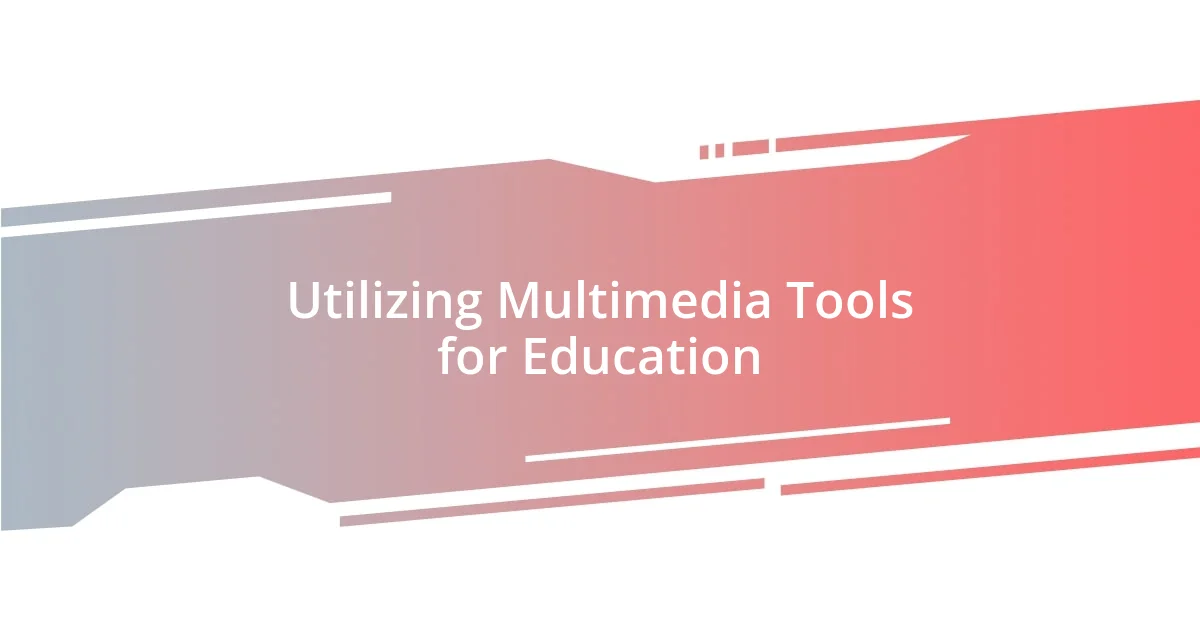
Utilizing Multimedia Tools for Education
Utilizing multimedia tools in education has revolutionized the way I share my journey with peers. For instance, when I created a short video highlighting my struggles with anxiety during exams, I felt empowered. Watching my classmates’ eyes light up with understanding made it clear that visuals can convey emotions more effectively than words alone. It’s fascinating how a mere image or sound can encapsulate the essence of a feeling, right?
I also enjoy using presentation software to combine visuals and text, which helps me emphasize key points. During a recent group discussion, I incorporated infographics to illustrate how stress affects our academic performance. Seeing my peers nodding along as they absorbed the information was rewarding. It reinforced my belief that when we make learning visually engaging, we foster retention and deeper connections.
Podcasting is another approach I found effective for sharing my experiences. Once, I recorded a casual chat where I detailed my journey through overcoming imposter syndrome. Listening to my voice as I narrated those challenges felt cathartic, and I was amazed at the feedback. Peers mentioned they could relate closely and appreciated having a platform where they, too, could share their thoughts. Isn’t it remarkable how multimedia can transform what we learn into shared experiences?
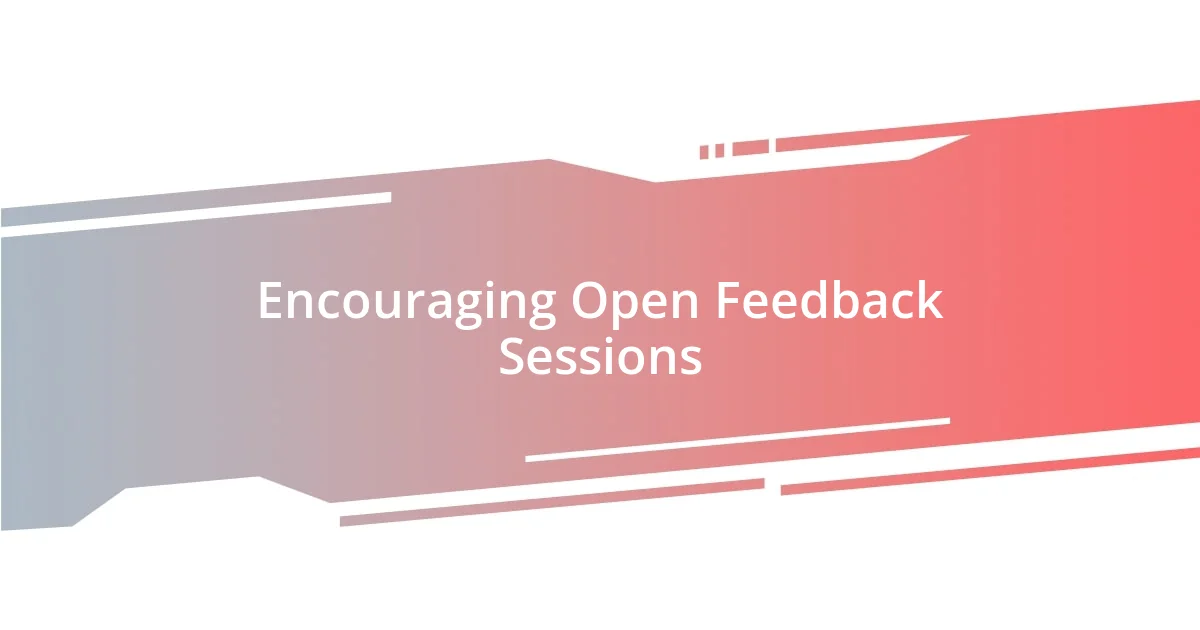
Encouraging Open Feedback Sessions
Encouraging open feedback sessions has been a game changer in my journey of peer education. I remember the first time I initiated a feedback session after giving a presentation. I simply asked my classmates, “What did you think of my approach?” Their initial hesitance quickly melted away, and as they shared their thoughts, I could see their faces light up with the joy of contributing. It reinforced my belief that everyone has valuable insights, waiting to be expressed.
Creating a comfortable atmosphere is essential for these discussions. In one particular session, I brought in snacks—nothing fancy, just some cookies and fruit. As soon as we settled in with those treats, the mood shifted. Peers began to open up about their thoughts on my project and even shared their own challenges. It reminded me how little gestures, like food and a relaxed setting, can transform a daunting feedback session into a warm exchange of ideas.
Additionally, I’ve learned that framing feedback as a gift greatly enhances openness. During a recent session, I prompted my peers by saying, “Think of this as a chance to help each other grow.” Their eyes sparkled with understanding, and that shift turned our conversation into a collaborative dialogue, where everyone felt valued. Isn’t it fascinating how language shapes our interactions? The more we frame feedback positively, the more it turns into a collective journey rather than just a critique.
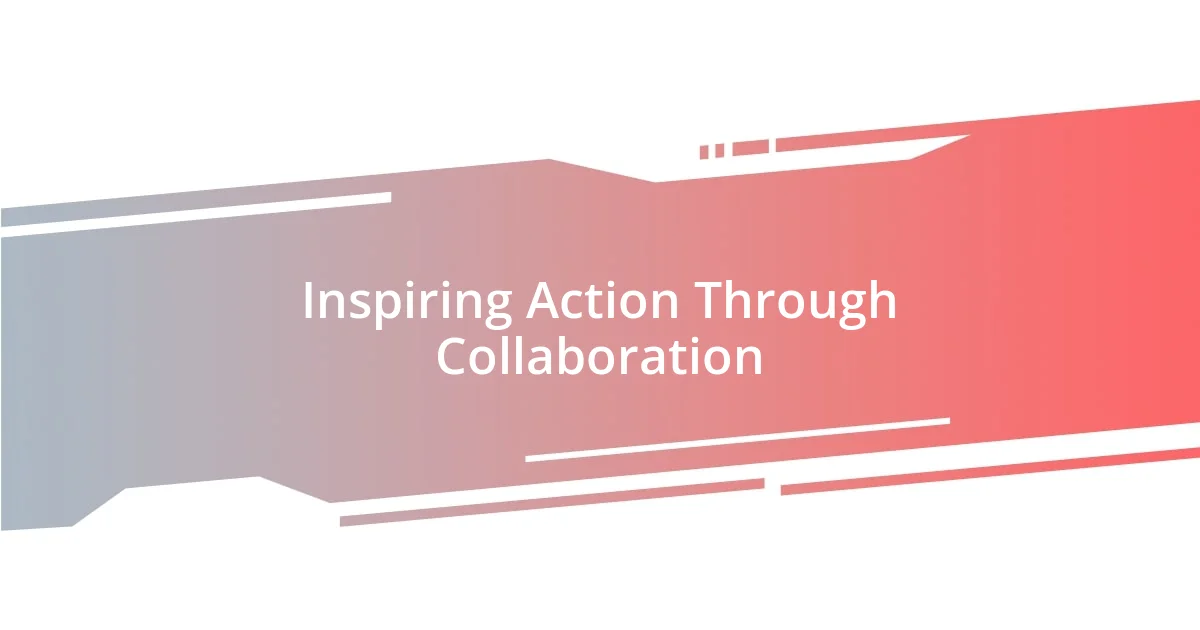
Inspiring Action Through Collaboration
I’ve found that inspiring action often occurs when collaboration flows naturally among peers. During a group project aimed at understanding mental health resources, I organized a brainstorming session where each of us brought our unique perspectives. As we sat together, bouncing ideas off one another, I noticed some of my quieter classmates begin to share their thoughts. It was amazing to witness how collective excitement can spark motivation; once someone broke the ice, everyone jumped in, turning hesitations into enthusiastic discussions. Have you ever found yourself in a similar situation where a simple conversation transformed the dynamics of a group?
Working together fosters an environment that encourages accountability too. I remember one time after discussing our individual challenges, we collectively set goals and decided to check in weekly. The commitment felt more profound since it wasn’t just about supporting each other but building a transparent network of encouragement. Every little update shared during those meetings inspired me to keep pushing forward. Can you recall a time when accountability from a peer group kept you on track?
Moreover, utilizing collaborative tools can amplify our efforts. When a friend and I created a shared digital whiteboard to visualize our experiences, it became a powerful platform for discussing our insights and lessons learned. We began jotting down our educational journeys alongside milestones—each addition felt like a celebration. These shared spaces not only invite more voices but also create a visual narrative of our collective growth. Isn’t it incredible how digital collaboration can manifest real connections and push us all toward meaningful action?

